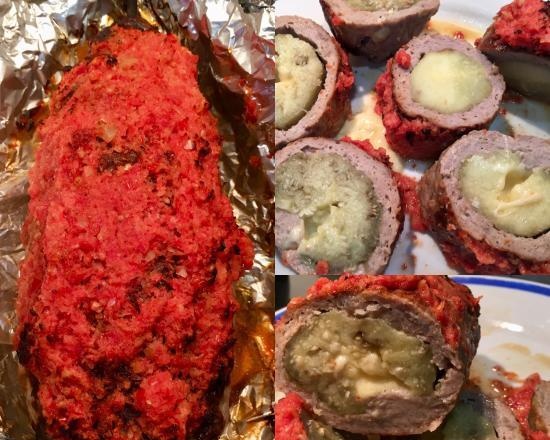I came across this article:
Killer Bread. About the dangers of gluten (panifarin)
Russia's integration into the world economy has made such useful innovations as supermarkets and fast foods accessible to the average person. And along with them, Russians began to learn about modified foods, hormonal meat, obesity, allergies and celiac disease.
About the last mysterious disease, about which a lot is known in the West, but still little is known in our country, it is customary not to spread. For some reason, it is believed that only children are ill with it and that it is inherited, and that a person suffering from this strange disease cannot afford to eat bread.
It was celiac disease that caused the decline in bread consumption worldwide. There were statements that "bread is poison." This idea is especially hard for Russian doctors, because in the minds of a Russian person bread is a vital force, and our traditions of baking are one of the most ancient. It is very difficult for a Russian to believe in the idea that if you eat bread, then you wither and bend, expose yourself to the risk of getting cancer or becoming sterile. For us, bread has always been health and babies in the village were given bread crumb instead of a nipple and they grew rosy-cheeked strong men without diarrhea and constipation, without diathesis and asthmatic allergies. So what happened? Why did bread suddenly start killing people?
To understand why Russian doctors are so reluctant to believe in the existence of celiac disease, it is necessary to bear in mind that in this case, it is not bread that becomes poison, but all products containing gluten. Therefore, in the entire civilized world, along with the usual gluten-containing products, you will always be offered products free of it. Of course, they will be several times more expensive. It's just that gluten came into our lives and poisoned it through bread. Only Russian bread has never been a poison, but it can become one. For this he now has all the possibilities.
But first you have to tell the truth about celiac disease. The destructive effect of gluten was first discovered in the middle of the last century in Europe. The Finns were the first to draw attention to this problem, children under the age of two were exposed to the disease. Since the symptoms were manifested in children, a myth was born about the hereditary nature of the disease. At the same time, doctors called celiac disease an intestinal disease caused by damage to the villi of the small intestine, which leads to impaired intestinal absorption. The terrible symptoms of the disease: bloating, constipation, diarrhea, a huge abdomen and muscle atrophy - disappeared in patients in a matter of months, immediately after the wards were excluded from the diet of bread. Thus, foreign doctors came to the conclusion that bread is poison. But since a crushing blow could be dealt to the grain industry, the occurrence of the disease was explained not by the quality of the bread produced, but by genetics. Say, there are such strange people who suffer from intolerance to bread gluten.
Meanwhile, American and European bakers, instead of paying attention to the alarming trends, continued their efforts to discredit bread as a healthy product. They did this, of course, not out of malice, but solely for business reasons. In 1979 in America, in the state of Kansas, the Association of Wheat Gluten Producers was created, which actively promoted and sold the product of the new millennium, namely dry wheat gluten - gluten.
If you go into the depths of the centuries and raise the old recipes of Russian bakers, you can see that they gave priority to sourdough and fermentation processes.In their view, the value of bread lay in the fact that it was alive, and it was given a short life - no more than two days. Ancient recipes describe in detail how to deal with hardening or mold, adding malt and pectin to retain moisture, lecithin, that is, eggs, natural preservatives in the form of sorbic acid and propionic acid salts. And with just one sentence, at the very end of the recipe, that for the elasticity of the bread dough, you can use a gluten concentrate in the amount of 2-3% of the flour weight.
Modern bakers add 4-6% gluten only to improve the structure of the bread, and when developing new, expensive types of bread products, such as cookies, muffins, waffles and biscuits - from 20% to 40% gluten. In the composition of fillings of flour and confectionery products - up to 50% gluten by weight of flour. In addition, gluten as a preservative has found wide application in the enrichment of ready-made breakfast cereals, which our children love so much, in long-term storage yoghurts, in steaks, cutlets, frozen foods intended for subsequent frying, cheeses, crab meat, artificial fish caviar, processed cheeses, canned fish tomato, chocolate and chewing gum.
The Americans are the most successful in using dry wheat gluten in bread production. Over the past 30 years, the use of dry wheat gluten in world baking has grown tenfold, primarily in advanced countries with a developed agro-industrial industry. The use of gluten allowed bakers to achieve lush bread that could be stored and not spoiled for months without much financial, intellectual and labor costs. According to the bakers themselves, the total dominance of gluten in baking happened solely for economic reasons. Gluten is added to bread to reduce the cost of its production, because its use makes it possible to produce quality bread from low-grade flour, and high-grade flour is very expensive.
Quality means visual parameters such as elasticity, splendor and long storage. The idea that bread should be alive, and not stuffed with preservatives, was not taken into account by them. In their defense, bakers launched the promotion of gluten as a protein product that has important value for human health and contains vitamins of groups B, A and E. Their baton, however, already when they started talking in America about the need to produce gluten-free products, with triple zeal they took up Russian dealers. Here is an advertising thesis for bakery manufacturers: "The rapid development of technologies in the bakery industry makes it possible today to produce bread with a high gluten content, which retains its nutritional properties in a special vacuum package for up to one year." And here's another, cooler than the first: "Dry gluten is a natural ingredient, so there is no limit to its use as an additive."
The limit, unfortunately, is also its name - the human body, which resists, fights and refuses to mutate, dooming a person to inhuman suffering. Flatulence, fetid feces, aphthous gum ulcers, loss of whiteness of teeth, muscle cramps, menstrual pain, bloating, amenorrhea, anemia, anorexia, joint pain, constipation, depression, behavioral problems, diarrhea, dermatitis, infertility in men and women, general malaise , muscle weakness, osteoporosis, vomiting, obesity or vice versa, weight loss, rickety stomach - these are all signs of celiac disease. Over the past 40 years, clinical research on the disease has shocked doctors.
Since gluten is a water-insoluble protein, it does not dissolve not only in water, but also in salts. When gluten in the human body becomes in excess, it becomes clogged in the small intestine, like cement, sticking together its finest villi, causing degeneration of the small intestine.In this state, the intestines are no longer able to absorb any vitamins or other beneficial substances, which are mentioned in the advertising brochures of "advanced bakers".
The results of studies by Ukrainian scientists who have identified latent forms of the disease and called it mute celiac disease, it seems, can drop grain sales at times. Vyacheslav Perederiya, Ukrainian gastroenterologist and head of the Department of Faculty Therapy N 1 of the National Medical University named after A. Bogomolets denied the claims that celiac disease is a hereditary disease. He stated that in recent years, celiac disease has become the most common disease of the small intestine, which affects people of all ages, mainly adults between the ages of 20 and 70. This disease is rare among bread consumers under 20.
The conclusions reached by Ukrainian scientists indicate that gluten accumulates in the human body for many years, causing severe pathologies that doctors cannot associate with their true cause. According to Ukrainian scientists, celiac disease has intestinal symptoms only in 30% and non-intestinal symptoms in 70%. In addition, it disguises itself as other diseases such as type 1 diabetes, hepatitis, colitis, arthritis, malignant tumors, cell lymphomas, bone softening, oropharyngeal cancer, and colon and small intestine cancers. Modern medicine is not ready for such a turn of events. But most tragically, there is no direct link between the consumption of foods containing gluten and clinical symptoms, as, for example, with allergies. In other words, if a child loves fast food rolls, cheese, chocolate, sausages, chewing gum, then becoming an adult, he can get sick, for example, with cancer of the small intestine. And it is unlikely that a traditional doctor will be able to establish that the cause of everything is gluten.
According to Vyacheslav Perederiy, gluten became a poison as a result of a sharp change in human nutrition and ecology. Damage to the intestinal walls leads to intolerance to lactose, sucrose, interferes with metabolic processes and causes intoxication. In short, by cementing your intestines with gluten, you can hardly expect that the food you eat will work for you. Most likely it will also become poison.
Fortunately, Russia is not an advanced agro-industrial country, so its backwardness in this case played to the good of the nation's health. Russian bread, largely due to the fact that it has not yet become a commodity, but continues to be a social product, can be eaten without a threat to life. Anyone who has been abroad will well remember the crunch on the teeth of these awful "plastic" buns, tasteless and odorless, which you chew like paper, or the sight of this vacuum-packed sliced toast bread, lifeless and not moldy for months. Anyone who has lived abroad for a long time probably remembers the batter for pancakes in special bottles, which does not spoil for months outside the refrigerator, and gluten flour on supermarket shelves, from which Russian emigrants are trying in vain to cook up natural Russian rolls, Easter cakes and shangi.
“Advanced” Russian marketers, apparently unaware of the grave consequences of gluten exposure on their bodies, are broadcasting about a breakthrough in the Russian bread market and a “consumer revolution” in this market segment. Having fallen into euphoria, apparently in anticipation of profits, they forecast an increase in frozen bread sales in Russia by the most conservative estimates up to 30% per year. They call on large producers, that is, bakeries, to reorient towards Western technologies and the production of bread from frozen semi-finished products for the mass segment. In their opinion, this will help dense Russia move closer to the West and become a civilized grain power. What awaits the Russian consumer when bread becomes a commodity in our country? The answer is obvious: nothing good.
In addition to the harmful effects of gluten on the intestines of Russians, apologists for synthetic overseas bread should also remember that in America and Europe, bread consumption is declining every year, and the number of gluten-free restaurants and shops is growing. Perhaps for this reason, technologies for the production of gluten-free frozen bread are bursting into Russia under the guise of modern ones, so that we, who are still wearing cribs and sandals and kneading dough with yeast, can teach us wits. Only in tsarist Russia the best bread in the world was baked, and the secrets of baking Russian rolls can become an indisputable competitive advantage of modern Russian bakers, and bread will not turn into poison, but, as it has been customary in Russia since ancient times, everything is the head. A source:
🔗




